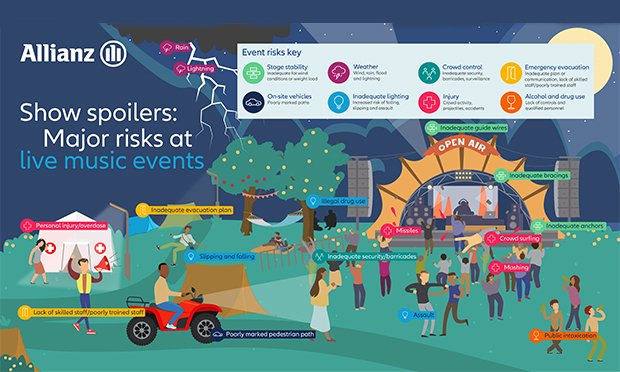 As well as shortages of staff, a scarcity of resources could potentially be a problem for the sector. If more shows are staged, and you have productions in parallel, there will be a higher demand on touring equipment, which is often hired from rental houses with limited resources. (Credit: Allianz Global Corporate & Specialty)
As well as shortages of staff, a scarcity of resources could potentially be a problem for the sector. If more shows are staged, and you have productions in parallel, there will be a higher demand on touring equipment, which is often hired from rental houses with limited resources. (Credit: Allianz Global Corporate & Specialty)
The COVID-19 lockdowns of 2020 and subsequent restrictions on gatherings had a devastating effect on the creative economy. Losses to the live events industry totaled more than $30 billion, according to music industry trade publication "Pollstar," including ancillary revenues such as merchandise, sponsorship and hospitality. Even after certain restrictions were eased in 2021, the pandemic left its mark on human behavior, with 84% of people saying they were spending more time on online entertainment at home than on in-person entertainment outside it.
Recommended For You
Want to continue reading?
Become a Free PropertyCasualty360 Digital Reader
Your access to unlimited PropertyCasualty360 content isn’t changing.
Once you are an ALM digital member, you’ll receive:
- Breaking insurance news and analysis, on-site and via our newsletters and custom alerts
- Weekly Insurance Speak podcast featuring exclusive interviews with industry leaders
- Educational webcasts, white papers, and ebooks from industry thought leaders
- Critical converage of the employee benefits and financial advisory markets on our other ALM sites, BenefitsPRO and ThinkAdvisor
Already have an account? Sign In Now
© Touchpoint Markets, All Rights Reserved. Request academic re-use from www.copyright.com. All other uses, submit a request to [email protected]. For more inforrmation visit Asset & Logo Licensing.







